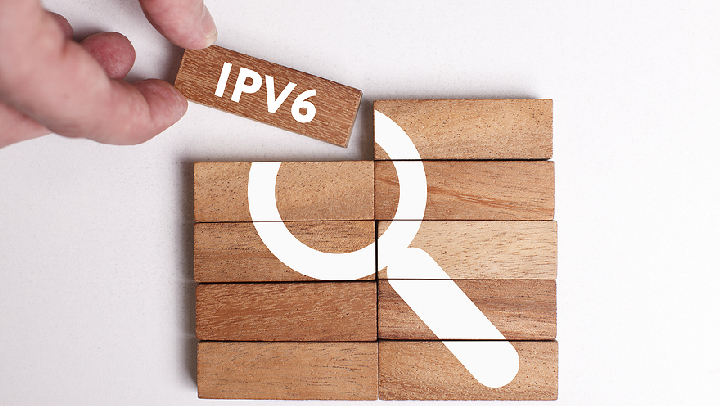
As the digital frontier continues its rapid expansion, our underlying network protocols must adapt to stay at pace. A crucial development related to this is the shift from IPv4 to IPv6, an essential move to accommodate the explosive growth in internet-enabled devices. Yet, alongside its enhanced capabilities, IPv6 introduces a suite of new security challenges that cyber adversaries are increasingly weaponising. Understanding these emerging vulnerabilities is vital for aspiring network professionals, such as those taking CCNA course in Singapore, in order to fortify defences in the IPv6 landscape.
This article delves deeply into the architecture of IPv6, highlights its inherent weaknesses, and explains why deliberate blocking or rigorous monitoring of IPv6 traffic is a critical cybersecurity strategy.
What is IPv6?
Internet Protocol version 6 (IPv6) is the latest iteration of the IP protocol, designed to supplant IPv4 by offering an astonishingly expanded address space—128 bits as opposed to IPv4’s 32 bits. This expansion provides approximately 3.4×10³⁸ unique addresses, easily supplying every conceivable device with a globally routable IP. Adoption varies, but modern operating systems and network equipment typically support both IPv4 and IPv6 concurrently.
Key Security Risks of IPv6
The many advantages that IPv6 brings when it comes to the transmission and management of data across networks also comes with a new wave of risks, namely:
1. Vast Attack Surface
The sheer number of potential addresses in IPv6 networks exponentially increases exposure. Scanning and discovering active hosts can become more difficult, yet once found, those hosts might be less monitored, presenting ripe targets for exploitation.
2. Inequitable Traffic Oversight
Many organisations devote the bulk of their monitoring and filtering efforts to IPv4, leaving IPv6 traffic comparatively unchecked. This gap in surveillance affords attackers stealthy avenues for intrusion.
3. Tunnelling Mechanisms
IPv6 supports encapsulation methods such as Teredo, 6to4, and ISATAP to facilitate transition over IPv4 networks. While valuable for compatibility, these techniques enable IPv6 packets to bypass traditional network firewall configurations and policies and intrusion detection systems, creating blind spots in security enforcement.
4. Absence of NAT
Network Address Translation (NAT) lends to some obscurity under IPv4 by hiding internal hosts behind shared IP addresses. In contrast, IPv6 typically operates without NAT, exposing individual devices directly to the internet—a shift that removes an incidental layer of protection.
5. Lack of Reputation-Based Safeguards
Reputation systems help flag malicious IPs by tracking known offenders. Such frameworks are well-established for IPv4. However, due to IPv6’s vastness, no widespread reputation database yet exists, leaving security products blind to potentially malevolent IPv6 addresses.
6. Ineffective Rate-Limiting Controls
Rate limiting throttles abusive traffic from single sources, which is an effective tactic under IPv4. But IPv6’s magnitude complicates this defence: attackers could launch attacks from a profusion of addresses, rendering conventional rate-limiting impractical even when grouping by large prefixes.
7. Stateless Address Autoconfiguration (SLAAC) and Privacy Concerns
SLAAC enables devices to configure themselves automatically using Router Advertisements. The use of temporary, privacy-oriented addresses (per RFC 4941) introduces variability in host identifiers, while stable, MAC-derived addresses may reveal device identity. Both scenarios hinder consistent logging and auditing, complicating forensic attribution or policy enforcement on individual hosts.
8. NDP and Router Advertisement Spoofing
IPv6 depends on the Neighbor Discovery Protocol (analogous to ARP) and Router Advertisements to orchestrate address resolution and autoconfiguration. These messages are inherently unauthenticated, enabling attackers to inject rogue RAs or poison neighbour caches. This can result in traffic interception, man-in-the-middle (MITM) campaigns, or denial-of-service (DoS) within local networks.
9. Extension Header Exploitation
IPv6’s flexible extension header structure can be manipulated to evade security devices. Malicious packets can be crafted with non-standard header combinations causing IDS/firewalls to misparse them, enabling attackers to slip through inspection or even trigger bugs—a risk heightened by tools predominantly tuned to IPv4. For those undergoing advanced training that includes the likes of certified ethical hacker courses in Singapore, understanding these attack vectors is crucial to replicating real-world adversarial behaviour and preparing effective countermeasures.
Guidance from NIST and Defence Agencies
NIST’s Special Publication 800-119, “Guidelines for the Secure Deployment of IPv6,” offers a foundational framework for understanding and mitigating IPv6-specific risks. The guide urges IT professionals to avoid simply duplicating IPv4 controls and to design security strategies tailored to IPv6’s unique characteristics.
Likewise, military and governmental cybersecurity agencies underscore that IPv6 cannot be secured merely by applying legacy methods layer by layer. Instead, a dedicated strategy is essential.
Why Blocking IPv6 Can Be Worthwhile
Given the increasing list of vulnerabilities in IPv6, it has become widely recommended by cybersecurity experts to closely monitor or even block IPv6 traffic, especially in high-risk environments. A few good reasons to do so include:
Mitigating Unmonitored Traffic
IPv6 traffic often lacks the comprehensive monitoring frameworks established for IPv4, creating blind spots that cyber adversaries can exploit. One prevalent threat is traffic hijacking, where attackers manipulate routing protocols such as the Border Gateway Protocol (BGP) to reroute traffic through malicious networks. IPv6’s relatively nascent security ecosystem—particularly on mobile and cellular infrastructures—renders it more susceptible to these exploits. When traffic is redirected in this way, attackers gain the ability to observe, alter, or discard data packets, thereby undermining data confidentiality and integrity.
By restricting or scrutinising IPv6 traffic, organisations can mitigate the risk posed by these stealthy attack vectors. The National Institute of Standards and Technology (NIST) emphasises that effective IPv6 security hinges on integrated monitoring strategies that encompass both IPv4 and IPv6 protocols.
Limiting Tunnelling Abuses
A standout feature of IPv6 is its support for tunnelling, which enables IPv6 packets to be encapsulated within IPv4 networks. While useful for transitional compatibility, this capability can be exploited by attackers to circumvent traditional security controls such as firewalls and intrusion detection systems. Disabling IPv6 traffic or controlling tunnelling pathways helps thwart these bypass techniques, closing off avenues for concealed and unauthorised data flows.
Containing Data Leakage Risks
Attackers exploiting IPv6 can reroute traffic, potentially through untrusted foreign infrastructure, risking metadata exposure or targeted interception—even when content is encrypted. Strict IPv6 policies can forestall these attacks.
One of the most alarming risks associated with IPv6 traffic relates to data leakage via rerouted paths. Cybercriminals who successfully hijack IPv6 traffic can divert it through foreign or untrusted networks, sometimes located in regions with different legal frameworks, thereby exposing sensitive information to unauthorised entities. Even when encryption is employed, attackers can capture metadata and analyse traffic patterns to infer valuable intelligence. Ensuring IPv6 traffic is restricted to trusted channels is therefore essential in minimising opportunities for this form of information exposure.
Reducing DDoS Attack Complexity
Distributed Denial of Service (DDoS) attacks remain a persistent threat in both IPv4 and IPv6 contexts; however, IPv6’s unique architecture complicates traditional mitigation efforts. The vast IPv6 address space renders conventional blacklist-based defenses largely ineffective, as attackers can exploit the enormous pool of addresses to launch more distributed and harder-to-block attacks.
Moreover, IPv6 facilitates reflection and amplification attacks, where attackers use legitimate servers to bounce and magnify traffic towards a victim, saturating their networks. This problem is exacerbated by the integral role of Internet Control Message Protocol (ICMP) in IPv6, which cannot be disabled without disrupting protocol functionality. Hence, attacks like Smurf floods—which abuse ICMP traffic to provoke high volumes of response packets—pose a heightened threat in IPv6 networks.
Adding further complexity, Internet of Things (IoT) devices connected via IPv6 can be hijacked to serve as participants in large-scale DDoS campaigns, amplifying attack volumes through these vulnerable endpoints. This underscores the critical need not only to secure IPv6 traffic itself but also the devices operating within IPv6 environments.
Curtailing NDP and Spoofing Threats
Eliminating IPv6 or deploying strong mitigations (e.g., RAGuard, SEND, IPsec-based protections) neutralises exploit paths through neighbour discovery and rogue route announcements.
Preventing Extension Header-Based Attacks
Blocking or normalising abnormal extension header usage limits evasion possibilities. Ensuring devices support robust parsing also reduces the stealth of specially-crafted malicious packets.
Enhancing Auditing and Forensics
Removing SLAAC or privacy addressing simplifies host traceability. Consistent addressing aids in building reliable logs, ACLs, and forensic records, preventing attribution ambiguity.
A Balanced Risk Approach
Blocking or restricting all IPv6 traffic may not always be practical long-term, especially as adoption increases. However, in high-risk or immature IPv6 deployments, it provides a safer interim posture while comprehensive IPv6-aware infrastructure matures.
Long-term strategy should include:
- Monitoring IPv6 flow as vigilantly as IPv4.
- Deploying awareness tools (e.g., IDS that understand IPv6 extension headers).
- Enabling secure RA practices and deploying prefix filters.
- Building reputation systems for emerging IPv6 addresses.
- Training teams through updated certifications and syllabuses that cover IPv6 attack surfaces, tunnelling, NDP threats, and log management.
Conclusion
IPv6 represents a leap forward in addressing the demands of a device-saturated world. Yet, with its launch comes complex security trade-offs that cannot be overlooked. A thoughtful, technically rigorous approach is necessary—one that balances interim protective measures like blocking with the progressive cultivation of IPv6-specific security capabilities.
Level up your networking career with BridgingMinds’ CCNA certification course. Learn from expert instructors, gain hands-on skills, and take the next step toward becoming an in-demand IT professional. Contact us today for more information and scheduling details.


